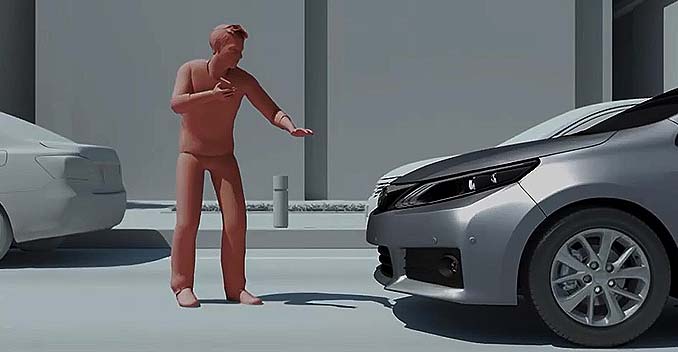Toyota recently announced a suite of new safety technologies that it plans to implement in its vehicles. Automatic braking, auto-adjusting headlamps, see-through parking cameras, vehicle-to-vehicle communication and vehicle-to-infrastructure communication are all on the list.
Chief Safety Technology Officer Moritaka Yoshida said that these systems surpass what is currently available on the most high-end luxury vehicles. Yoshida says that Toyota will add these safety systems to its mass-market vehicles without increasing costs. Some changes will be seen as early as the spring of 2015, while others will arrive in 2017.
How is Toyota able to introduce so much, so quickly and such a low cost?
“When it comes to improvement in this area,” Yoshida says, “it is moving very fast.”
That speed has been motivated by the brick wall automakers have encountered with conventional safety systems. The passive safety tech of yesteryear—stronger body frames, seat belts, air bags, etc.—has reached a level of diminishing returns, Yoshida says.
Put plainly, you can only make a steel girder so strong. After that, you have to look for new ways to protect passengers.
Some of Toyota’s new features are really cool. Vehicle-to-infrastructure could mean that your Toyota might be able to talk to the crosswalk up ahead. If the crosswalk has a camera that knows two pedestrians just stepped onto the street, your car might slow automatically.
Toyota is keeping the cost low by making two systems that it can apply to vehicles. The first, Toyota Safety Sense C, will fit compact cars. The second, Toyota Safety Sense P, will fit midsize and high-end vehicles.
These systems will deploy in Japan first because Japans’ auto regulators have approved the technology. But some features, like pre-crash auto-braking have cleared the U.S.’s regulatory bodies. We could see these in the U.S. in the spring of 2015.
As your Toyota dealer in Raleigh, we would love to walk you through the safety of Toyota vehicles. Stop by anytime.





Comments are closed.